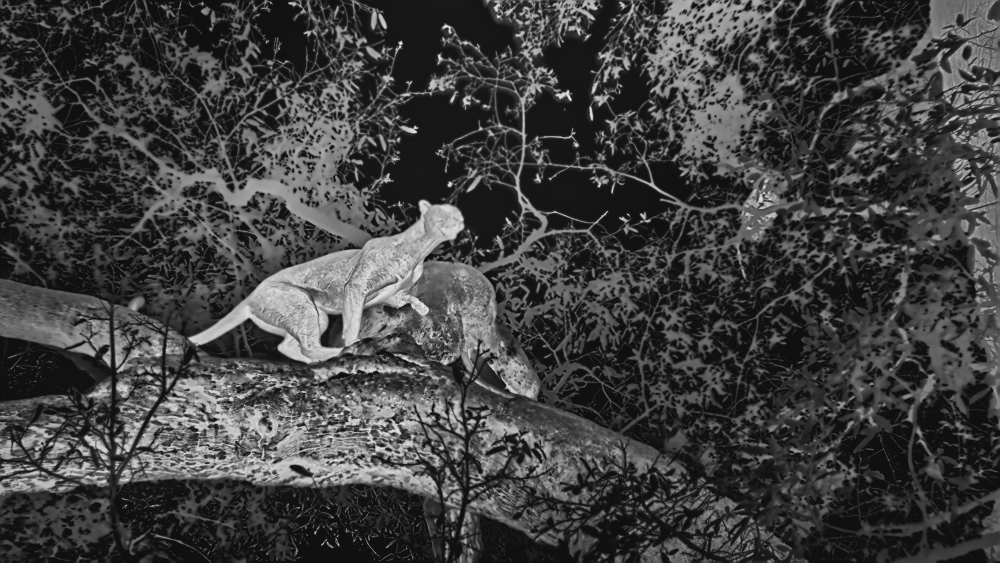An African leopard hunting yellow baboons at night is the dramatic scene that kicks off Mammals, the latest series from Sir David Attenborough and the BBC. The world-first footage demonstrates how these animals’ incredible sight adaptations have enabled them to proficiently stalk and kill prey under the cover of darkness, even when they’re 20 meters (66 feet) up a tree.
Yellow baboons (Papio cynocephalus) are active during the day and when night falls, they clamber into the trees to rest in a “sleeping grove” that’s usually located at the center of their territory. The advantage of being off the ground is that they’re safer from terrestrial predators, but as the world-first clip demonstrates, few places are safe when you’re dealing with African leopards.
Leopard’s vision is specialized for hunting at night, as they have a reflective layer behind the retina called a tapetum that can amplify the smallest amount of light. The first episode, Dark, is all about showcasing the remarkable ways wildlife have evolved to be active at night time, and the African leopard (Panthera pardus pardus) is the real poster animal when it comes to getting things done in the dark.
“I have to say it is the most astonishing thing to witness,” said Stuart Armstrong, producer for the episode. “In complete darkness, all you can see is the screen of your camera and spotting scopes which we use to highlight to the cameraman what’s going on.”

Diurnal prey are generally easier to sneak up on at night. That is, until they go and roost in a bloody tree.
Image credit: screen grab, BBC Studios
“The leopards only hunt on the darkest night. If the moon is half full, they wait for it to set, so they have the advantage. They can see in what to me is pitch black. But they’re not just seeing in pitch black; they are also running around in the canopy and jumping from branch to branch. They can judge distance in order to get their dinner.”
That took my breath away.
Sir David Attenborough
The team successfully captured the moment a yellow baboon became that dinner, in a moment Armstrong said was “Pretty gruesome. Even though it’s black and white, you can see the blood dripping down the branch.”
The sequence even shocked the master of natural history filmmaking himself.

When it comes to natural history, it takes a lot to knock the socks off Sir David Attenborough.
Image credit: BBC Studios / Alex Board
“That took my breath away,” said Sir David Attenborough at a preview of Mammals. “How you saw that – at night – it was just breathtaking, and exciting for me.”
Much of the episode focuses on how some species have adapted to be active at night in response to a predator that’s extremely active during the day – us. Our impact is further studied in the episode The New Wild, which includes world-first coverage of a group of wolves that have been able to claim a patch of land humans don’t want by somehow working out where all the landmines are buried.
You’ll also see the “splooting” spectacle of heat-dumping Harris antelope squirrels, chimps digging for honey (and refusing to share), and orcas kidnapping a humpback whale calf using slipstream. Turns out we mammals really are amazing, and you can catch all of this and more on BBC One and iPlayer.
Source Link: World-First Footage Shows A Leopard Hunting Roosting Baboons At Night